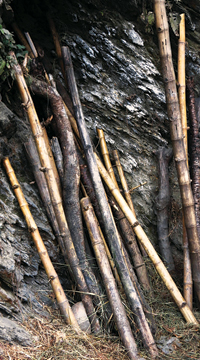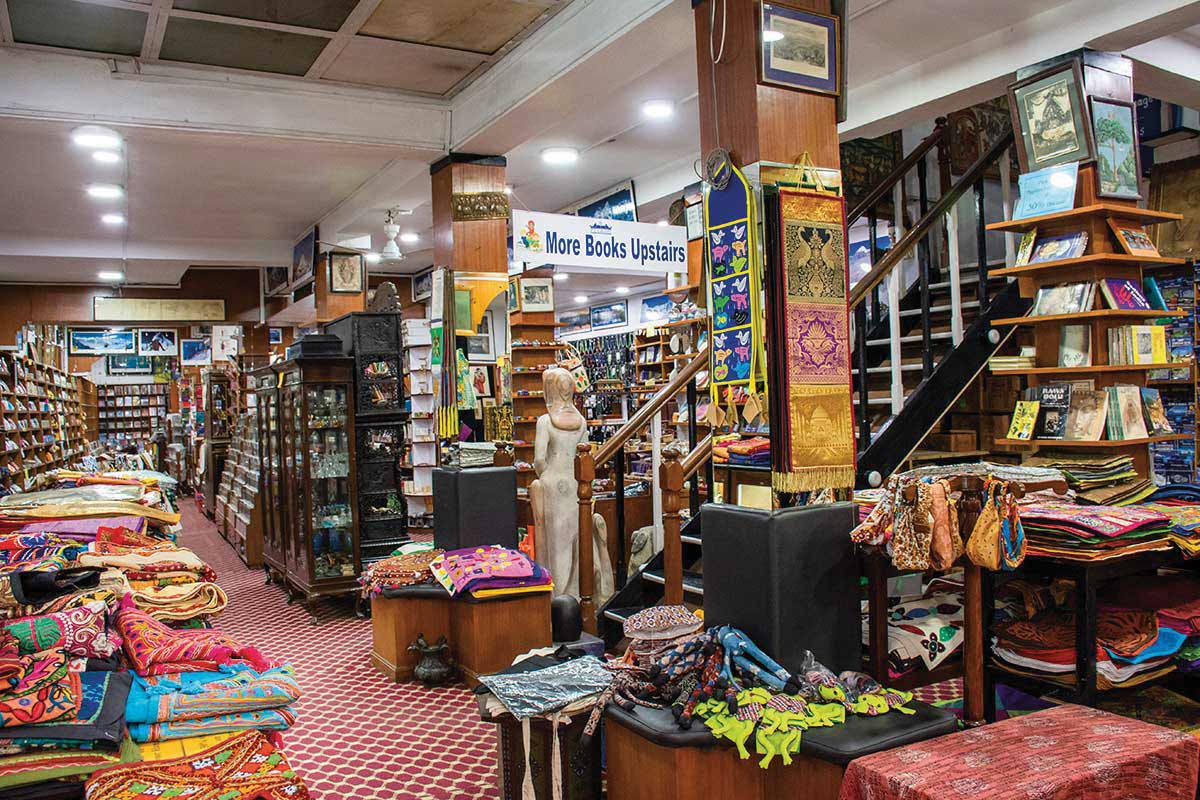nos·tal·gi·a noun
A wistful longing for past time or events; the evocation of this emotion, as in a story, book or film. Reminiscence. Sentimentality. Melancholy.
When I saw those bamboo poles and staves of wood (in the photo) beside a trekking trail, it reminded me of the many gnarled walking sticks I’ve cut over the years to accompany me on trek. And, oh those treks! Great times! Gone but not forgotten...
Someone recently suggested that I write about trails I used to trek years ago across Nepal, over mountain passes, down picturesque valleys past ripening grain, through old-world villages, across shaky bridges or knee deep out in the flow of it. And of interesting people I’ve met along the way. But, alas, too many of the old trails have been replaced by rough and untrekable roads - dusty in the dry months, muddy in the wet, and noisy with the roar and horns of motorcycles, jeeps, trucks and overloaded busses.
 All that dust and mud reminds me of Gularia, the Bardiya District town in west Nepal. Locals sometimes call it ‘Dhularia’ in the dry season (from dhulé/dhulo, ‘dusty’) or ‘Hilaria’ in the wet season (from hilé/hilo, ‘muddy’). As roads are bato in Nepali, how about ‘Dhulato’ and ‘Hilato’ to differentiate their seasons?
All that dust and mud reminds me of Gularia, the Bardiya District town in west Nepal. Locals sometimes call it ‘Dhularia’ in the dry season (from dhulé/dhulo, ‘dusty’) or ‘Hilaria’ in the wet season (from hilé/hilo, ‘muddy’). As roads are bato in Nepali, how about ‘Dhulato’ and ‘Hilato’ to differentiate their seasons?
Nostalgia is a yearning for things past, an introspective quest to return home, so to speak. I often write from memory of things past. That makes me a memoirist. Some time ago I wrote an essay in this column entitled ‘Going back to yesterday: Where memoir and memory meet’ (Nov. 2011). I began by quoting a famous actress who once said that “...one should go back and search for what was loved and found to be real.” That’s where memory and memoir begin, I concluded nostalgically.
The writer Lee Martin reminds us that any memoirist who deals with nostalgia must be exceedingly candid: “To deal in nostalgia without becoming nostalgic,” he says, “a writer has to be honest, has to see the entire palette of the experience, both the bright colors and the dark ones.” His advice pertains not only to writers but to anyone who muses wistfully on the past. All those old events and places nicely remembered may not have been entirely rosy and bright. Sometimes life in our past dream space was bleak and harsh. But, that’s no fun, so we prefer to write about things past that delighted, amazed or perhaps bewildered us, in a voice that is kindly towards old memories without clouding them over with false sentiment or remorse. We have all enjoyed great times, and as people who care about the past, we writers (and educators, and historians, and anthropologists...) hope that not all of it will be forgotten.
Some months back, while trekking through Thakali villages in Mustang and Myagdi Districts, I told my Nepali companion stories about the people I had known and things I had seen or had researched there years before. One historic highlight is 19th and early 20th century trans-Himalayan salt-for-rice trade along the Kali Gandaki River corridor. On hearing the stories, he asked why this knowledge is not in the history books. Why not, indeed! Perhaps we memoirists can revive it.
One reader who commented on Lee Martin’s nostalgia blog made the cogent point that working with memoir and nostalgia is “a tricky road to travel.” It gave him, he said, “something to think about tomorrow when I sit down to write!” It is also risky, but, as another writer observed on the blog, “unless we take those risks what we write is cool and bloodless.” Somehow, he goes on to say, he was “able to push right out to the edge of sentimentality without tumbling into the abyss.”
Don’s essay ‘Going back to yesterday’ is archived at ecs.com.np/spilled_ink.php?s_id=46. He can be contacted at don.editor@gmail.com. Lee Martin’s nostalgia blog is at leemartinauthor.com/blog/2012/09/nostalgia-and-the-memoirist/.









